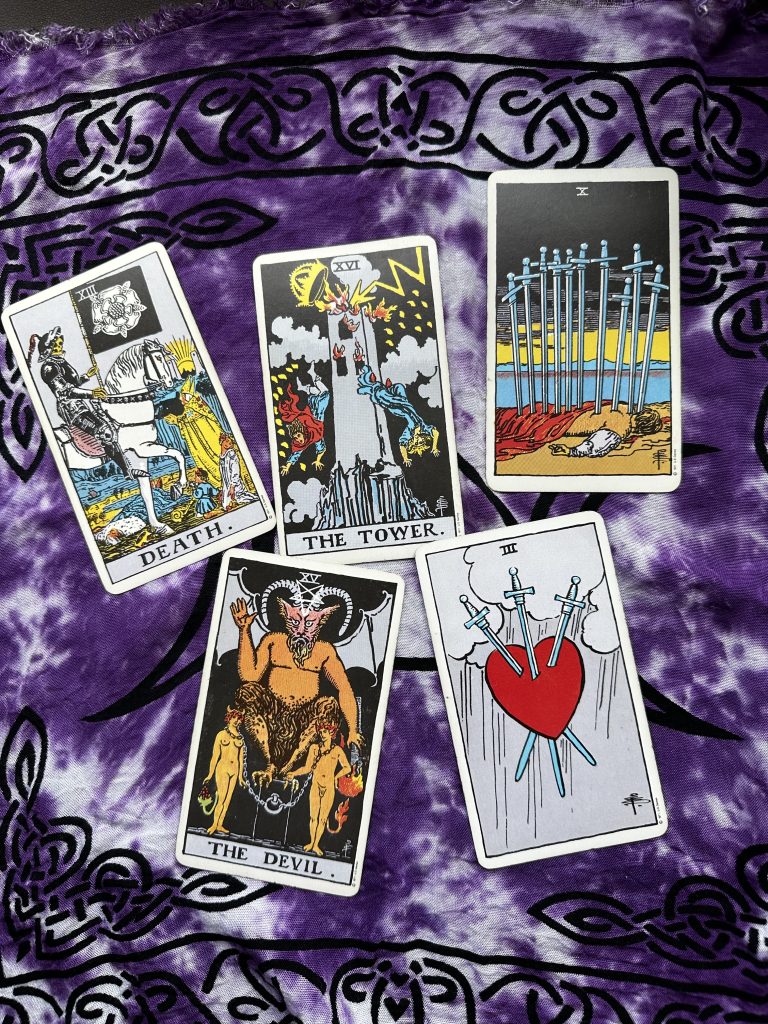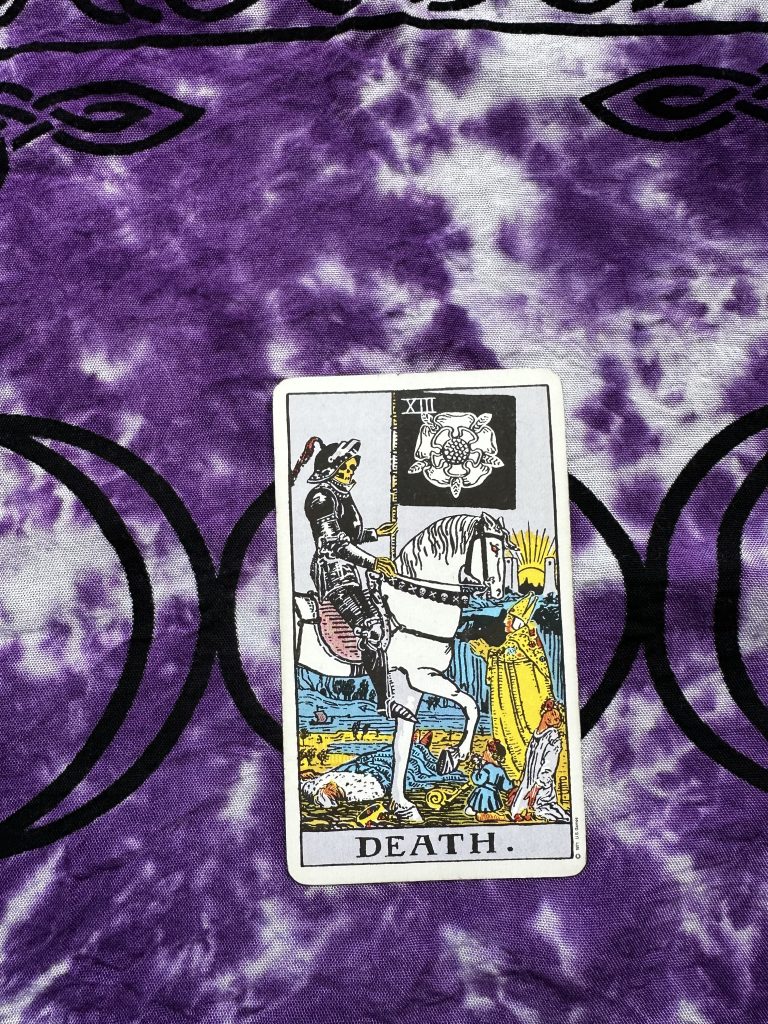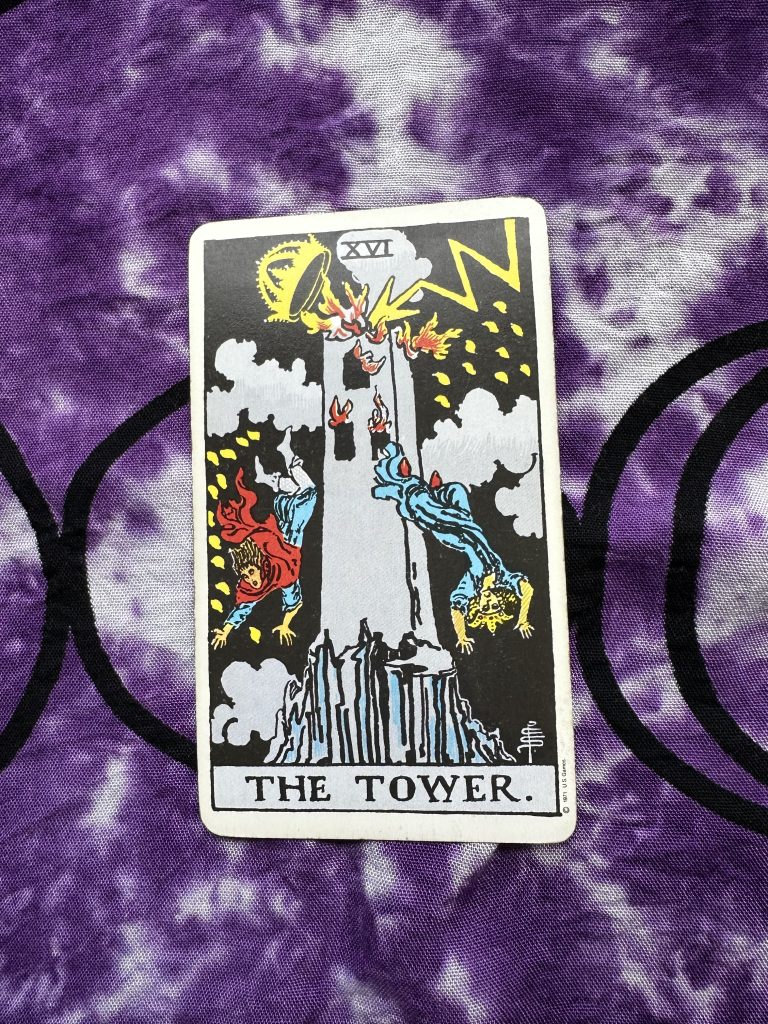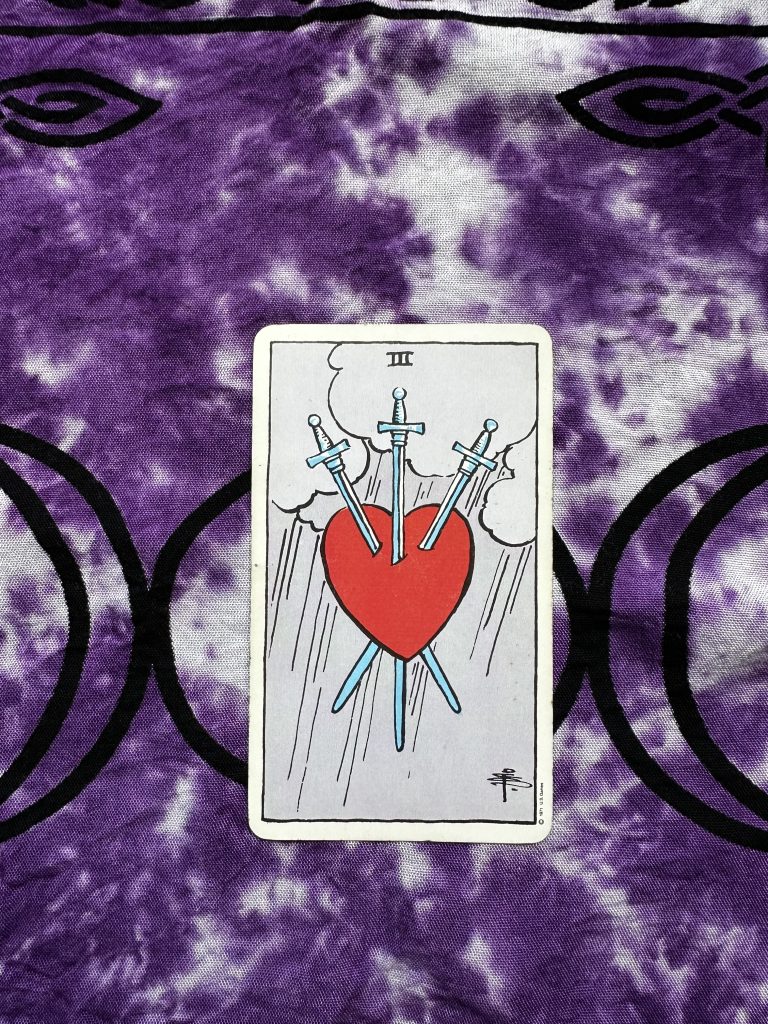Your cart is currently empty!

Let’s Talk About … “Scary” Tarot Cards
—

Oh no! You’ve pulled the Death card! Someone is going to die, right?
Wrong! Relax. The Death card doesn’t foretell tragedy any more than a black cat crossing your path dooms you to bad luck.
So, let’s talk about those so-called “scary” Tarot cards—the ones that make people gasp when they show up in a reading. You know the ones: Death, The Tower, The Devil, the Ten of Swords, and even the Three of Swords. These cards have an intimidating reputation, thanks to their dramatic imagery and pop culture misinterpretations. But here’s the truth—they’re not here to predict doom and gloom. In fact, they’re some of the most powerful catalysts for growth and transformation in the deck.
Death: Time for a Change
Despite its ominous name, the Death card isn’t about literal death—it’s about endings and beginnings. Think of it like cleaning out your closet: you need to get rid of the outdated, ill-fitting clothes to make space for something new and fabulous.
Death in Tarot is a nudge (okay, sometimes a big push) to release what no longer serves you so you can embrace the next phase of your journey. It’s an invitation to step into a new chapter, leaving behind what no longer serves you.


The Tower: When Change is Inevitable
The Tower might be one of the most feared cards in the deck, but it’s also one of the most necessary. Yes, it signals sudden upheaval, but sometimes we need a shake-up to get us unstuck. The Tower tears down what is no longer stable so you can rebuild on a stronger foundation. Think of it as the universe doing some cosmic spring cleaning—it might be intense, but it clears the way for something better. The Tower reminds us that change is inevitable, and it’s best to prepare and embrace it rather than resist it.
The Devil: Facing Your Shadows
The Devil isn’t about evil forces lurking in the shadows—it’s about recognizing where you might be holding yourself back or where you might be stuck. This card invites you to break free from unhealthy patterns, limiting beliefs, or toxic attachments. Seeing The Devil in a reading is like getting a reality check: “Hey, is this really serving you?” It’s not here to scare you; it’s here to empower you to reclaim your freedom and step into your personal power. The Devil is an invitation for self-examination and a call to break free from what no longer aligns with your highest good.


Ten of Swords: The End of a Tough Cycle
At first glance, the Ten of Swords looks painful—someone lying on the ground, ten swords stuck in their back. Ouch. But if you look closer, you’ll notice the sky is clearing in the background and the light is returning. This card represents the end of a difficult situation, a reminder that the worst is behind you. It’s the Tarot’s way of saying, “Yes, that was tough, but it’s over now. Time to get up and move forward.”
Three of Swords: Healing Through Pain
The Three of Swords is an intimidating card, depicting a heart pierced by three swords. Surely this can’t be good… or can it? Actually, the Three of Swords invites us to confront heartache, loss, or disappointment—not to dwell in suffering, but to acknowledge and process it. Pain is part of life, but it also opens the door for healing, growth, and deeper emotional wisdom. This card asks us to face our wounds honestly so we can release them and move forward with clarity and strength. Sometimes, breaking open is the first step toward true healing.

Embracing the Shadows for Growth
Tarot isn’t about telling us what we want to hear—it’s about showing us what we need to see. These so-called scary cards aren’t warnings of disaster; they’re invitations to change, grow, and step into a more authentic version of ourselves. The next time one of these cards shows up in your reading, take a deep breath and ask: What transformation is waiting for me?
Because, in the end, the scariest thing isn’t the cards—it’s staying stuck when life is calling us to evolve.
Frequently Asked Questions
Some Tarot cards can serve as warnings, highlighting potential challenges or disruptions. However, context is key—these cards don’t always indicate physical danger but can point to emotional, financial, or spiritual difficulties. The true power of Tarot lies not just in cautioning us but in offering guidance and solutions to navigate life’s challenges.
There are no “bad” Tarot cards, but some can feel a bit more intimidating than others. Cards like Death and The Tower might look dramatic, but they’re really about transformation, change, and clearing the way for something new. Every card has a purpose, offering guidance to help us face challenges, embrace growth, and move forward with confidence.
Number 13 in the Major Arcana, Death, is one of the Tarot’s most well-known—and often misunderstood—cards. Its eerie reputation has been fueled by movies and stories, but in reality, Death isn’t about endings in a scary way. Instead, it’s a powerful symbol of transformation, encouraging us to embrace change and let go of what no longer serves us. It’s one of my favorite cards because it signals an important opportunity to accept change and step into something new. Growth often comes from releasing the old to make space in our lives for what’s next.
